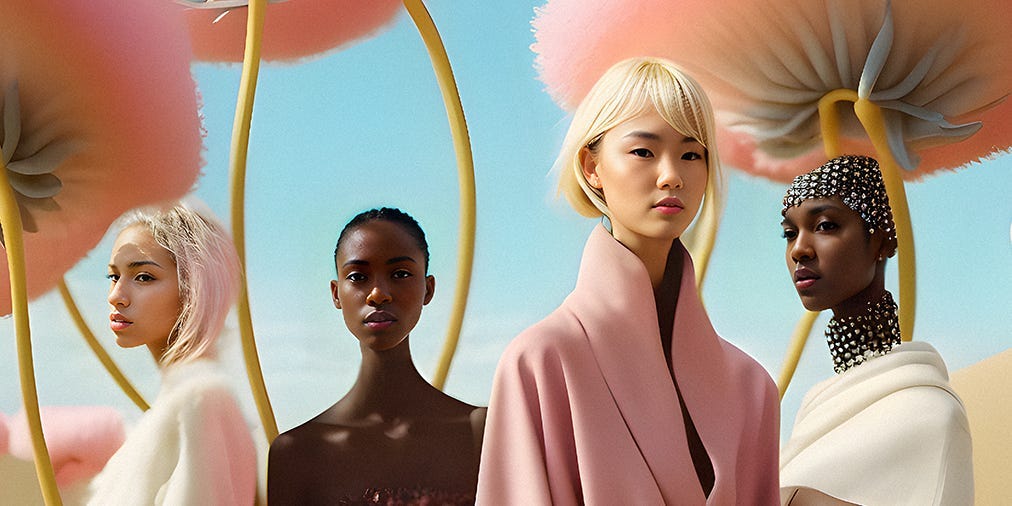- Online retailer Revolve worked with the agency Maison Meta to develop 3 AI-generated billboards.
- Generative AI is hard to control, and Maison Meta described how it made production-quality art.
- Revolve’s co-CEO said generative AI might lead to budgets shifting for future ad campaigns.
Earlier this week, the online clothing retailer Revolve put up three billboards along Interstate 10 leading to Palm Springs, in celebration of its 20th anniversary and its upcoming Revolve Festival.
What made these particular billboards different from other out-of-home creative is that they were developed using generative AI tools. The art was made by a new two-person agency called Maison Meta, who worked with Revolve’s VP of creative Sara Saric. As part of the campaign, people can also buy the AI-generated clothing featured on the art.
Thanks to the generative AI explosion, anyone can create a piece of art just by typing in a prompt. But many advertisers are still working out how to build these tools into their workflow.
Using generative AI to create high-quality images for ads, especially scaled to billboard size, is a huge challenge because it’s difficult to control the final result. The current iteration of these tools, for instance, is notorious for having trouble generating images of hands.
Maison Meta’s team, which includes partner Nima Abbasi and founder and creative director Cyril Foiret, has developed a workflow using a series of generative AI tools — including Midjourney, Stable Diffusion, and others. Foiret used this process to maintain tight control and create production-quality images that were used for three billboards and six street posters for Revolve’s 20th anniversary campaign “Best Trip.”
“Midjourney gives more of the ‘wow’ effect as far as the output, but Stable Diffusion has a lot more control over the position of the model, the lighting as well as the final composition,” Foiret told Insider.
Foiret used multiple models built on top of Stable Diffusion to hone the art for the out-of-home creative. For instance, he used an extension called ControlNet, which lets artists reposition objects within the AI-generated image, tweak facial expressions, swap out faces, and fine-tune lighting. Foiret can paint over a specific area within the image to isolate where he wants the change to happen and execute it quickly with a prompt. He could tell the technology, for example, to add a motorcycle jacket to a specific person.
Foiret also used the AI tools to scale up the images to billboard size, breaking the image into tiles and making sure each tile retained its fidelity, even when it was blown up to a massive size — a process called “AI upscaling.” Maison Meta also used a human staffer at a company called Twisted Loupe to re-touch the final versions of the campaigns before they went to print.
There are time and cost savings when using generative AI tools, Foiret said. It took about three weeks to generate the art for the billboards, whereas scheduling a photoshoot can take months.
“You can have a campaign that goes over a million dollars, depending on which photographer you use, or which model you have for your campaign,” Foiret said.
Revolve co-founder and co-CEO Michael Mente declined to give Revolve’s budget for the billboards, but said it was on par with what the company had spent in the past for splashy ad campaigns.
“There are possibilities for cost savings, but we really want to put the energy and the investment to make sure it’s just the best quality output,” Mente said. However, he envisions re-allocating budget within an ad campaign. For instance, he can see Revolve shifting funds away from the photoshoot to some other aspect of the campaign.
“We won’t have to spend on a photoshoot potentially, tens of thousands of dollars building a set,” he said.
Read the full article here




